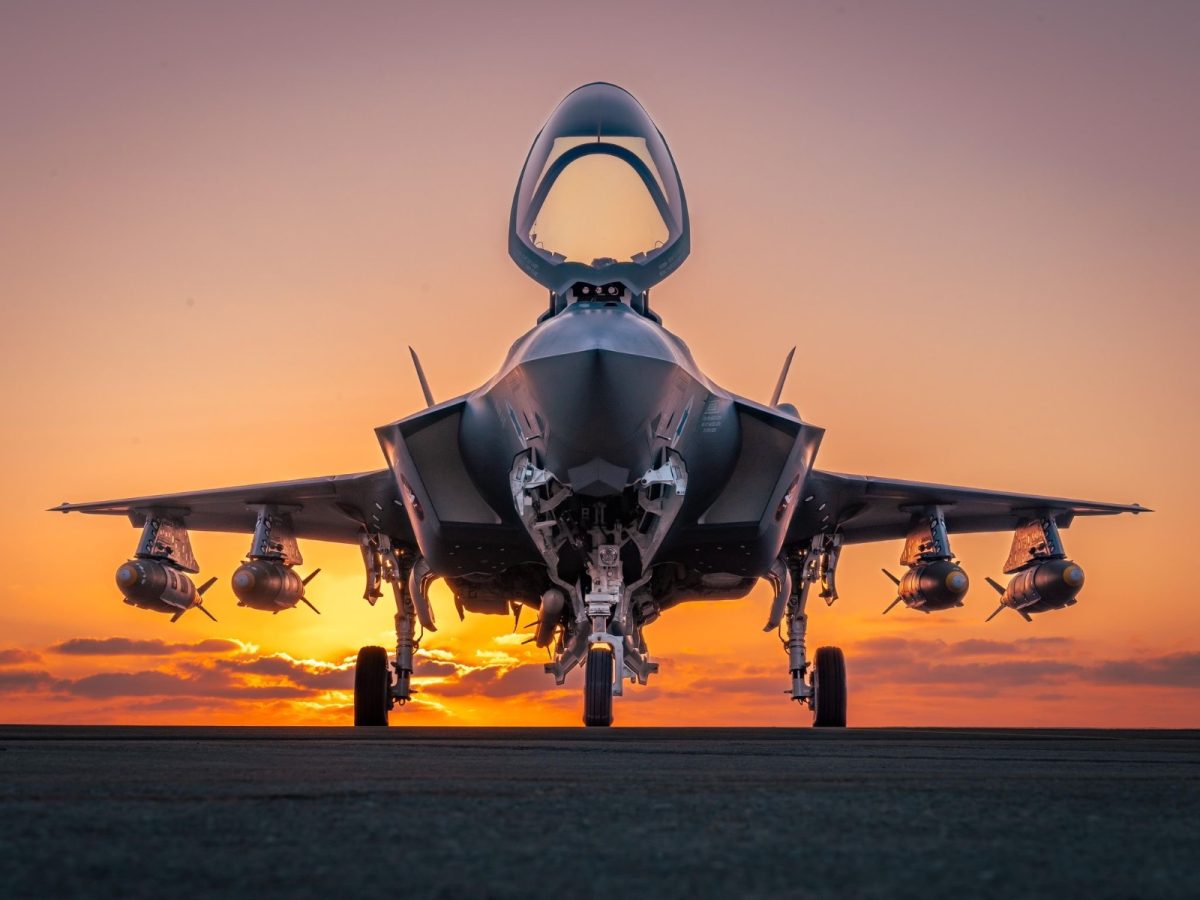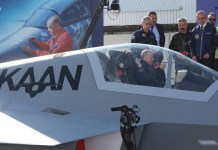There is an old English proverb – “Cutting off your nose to spite your face.” It seems that US President Donald Trump’s whimsical tariff policy, meant to bring jobs back to the country, is having the opposite effect, at least as far as Lockheed Martin’s flagship product, the F-35 Lightning II, is concerned.
Trump has been aggressively promoting “Make America Great Again” and promoting American military hardware. However, if Lockheed Martin thought that this would mean the defense giant selling more F-35 jets, then it was in for a rude shock.
Forget selling more jets; the company is struggling to keep the orders that were already signed before Trump returned to the White House in January this year.
The spate of cancellations and reviews of pre-existing orders is adding to the long list of woes of the F-35, which is already struggling with rising costs, TR-3 upgrade delays, engine modernization failures, and ballooning maintenance costs.
Lockheed Martin desperately needs new sales to help cover the costs of the F-35 program, which, at USD 2 trillion, is already one of the most expensive fighter jet programs ever.
However, amid the deadly cocktail of Trump tariffs, his threats against friendly countries, like making Canada the 51st state of the United States of America, or forcing Denmark to surrender Greenland, his unpredictable style of deal-making, and general unreliability mean that there is little chance of F-35 boosting its sales in the near future, or even keeping the existing orderbook.

In fact, Lockheed Martin is staring at this future despite Israel showing the whole world what the F-35s are capable of achieving in its 12-day war with Iran in June this year.
The Israeli F-35I Adirs regularly bombed Iranian military sites. They conducted numerous dangerous missions in Iran’s heavily contested airspace and delivered results without suffering any casualties.
Even during the B-2 bombings, the F-35s, along with the F-22 Raptors, led the mission. They moved ahead of the B-2 bombers, conducting air superiority and suppression of enemy air defenses (SEAD/DEAD) missions to clear the way for the B-2s to operate safely and effectively.
However, despite this strong showing, at least three countries have cancelled their pre-existing F-35 orders in 2025, one has put its order on hold, and one has rejected the F-35 despite being offered the fighter jet.
Put together, Lockheed Martin has lost 150 potential F-35 sales and is still unsure about 72 additional sales.
In return, Lockheed has received one new customer, the Saudis. Though, in all fairness, it is common knowledge that the Saudis have long been interested in buying the stealth fighter jet.
Trump has merely greenlighted their long-held request. However, even here, the deal is far from done, and the US Congress must approve it.
Israelis are dead against the deal. International rights groups have criticized it, and there are murmurs about the potential F-35 sale to the Saudis even in Australia.
One must wait and watch how the F-35 sale to the Saudis plays out.
Spate Of F-35 Cancellations In 2025
In March, Portugal cancelled plans to buy up to 36 F-35 fighter jets to replace its aging F-16 fleet.
Portugal’s air force recommended buying Lockheed Martin F-35s, yet the country canceled the deal.
When outgoing Defense Minister Nuno Melo was asked by Portuguese media Público whether the government would follow that recommendation, he replied: “We cannot ignore the geopolitical environment in our choices. The recent position of the United States, in the context of NATO … must make us think about the best options, because the predictability of our allies is a greater asset to take into account.”
“The world has changed … and this ally of ours … could bring limitations to use, maintenance, components, and everything that has to do with ensuring that aircraft will be operational and used in all types of scenarios,” Melo said.
He added: “There are several options that must be considered, particularly in the context of European production.”
Basically, Portugal cited Trump’s unreliability, his faltering commitment to NATO and Europe, US restrictions on the use of the F-35, and the need to buy European weapons amid changing geopolitical realities.
Politico described the cancellation as “one of the first examples of the U.S. president undermining a potential lucrative arms deal.”
Portugal has not announced a deal but is reportedly considering European alternatives, Rafale, Eurofighter Typhoon, and Gripen.
In July, Trump’s tariffs nearly killed the 2022 deal with Switzerland for 36 F-35 fighter jets.
Trump imposed a 39% tariff on Swiss goods such as watches and coffee capsules, after which many Swiss parliamentarians began openly criticizing the deal.

Green lawmaker Balthasar Glättli said, “A country which throws rocks at us in trade shouldn’t get a present.”
As of November, the deal is not formally cancelled and appears to be on track; however, discussions on price are ongoing.
In August, Spain cancelled its 2023 allocation of €6.25 billion (USD 7.24 billion) for 45-50 F-35A and 12-15 F-35B jets to replace Harrier II and Hornet fleets.
Spain said it will consider European options, such as the Eurofighter Typhoon or the under-development Future Combat Air System (FCAS), instead of the F-35.
The Spanish decision was preceded by a public spat between Madrid and Trump over his insistence that all NATO countries spend 5% of their GDP on defense. Spain has so far committed to spending only 2 % of its GDP on defense.
Trump has also offered the F-35 fighter jet to India. The country is actively looking to buy new fighter jets to stabilize its falling squadron strength. India fought a brief four-day war with Pakistan in May this year.
Following the war, media reports emerged that China is providing Pakistan with its latest stealth fighter jet, the J-35A, creating a capability gap with India.
Reportedly, India is actively considering buying a fifth-generation fighter jet and is evaluating the Russian Su-57 offer. Here, too, Trump’s tariffs might have spoiled Lockheed’s party.
Trump has imposed a 50% tariff on India, one of the highest in the whole world. If Trump had not imposed tariffs, New Delhi could have seriously considered purchasing the F-35 to maintain capability parity with China, and possibly with Pakistan as well.
However, Trump’s tariffs and his repeated provocations toward New Delhi meant the F-35 was out of the picture, leaving only one contender for India’s fifth-generation fighter jet: the Russian Su-57.
However, perhaps the most lucrative F-35 deal currently under review is with Canada.
In 2023, the then Canadian Prime Minister Justin Trudeau approved a deal worth 70 billion Canadian dollars, or US$50 billion, to order 88 F-35 jets.
The review will assess if the new fleet remains compatible with Canada’s military needs and the protection of its sovereignty “in light of evolving geopolitics,” according to the defense department.
Meanwhile, sensing an opportunity, Sweden is doing everything it can to sell its Gripen fighter jets to Canada.
Notably, Saab was one of the two finalists for the fighter jet contract, which Canada ultimately awarded to Lockheed Martin.
Saab has promised that if Ottawa orders Gripens, then it will make Canada a production hub for Gripens.
Sweden has just signed an LoI with Ukraine for 100-150 Gripen fighter jets, and Canada can also produce Gripens for export.
According to Saab, this will create 10,000 jobs in Canada.
In fact, currently, Sweden’s King Carl XVI Gustaf is on a state visit to Canada, which defense analysts are interpreting as a charm offensive to sell the Gripens to Canada.
“I don’t believe that we’ve had enough jobs created and industrial benefits done out of the F-35 contract,” Mélanie Joly, Canada’s minister for industry, told reporters in Ottawa earlier this week.
“Ten thousand jobs is indeed a very interesting offer,” she added, referring to Saab’s proposal.
The F-35 deal is still under review, and Sweden is watching closely; however, if Canada cancels the order for the remaining 72 jets, it would indeed be the biggest loss for Lockheed Martin and the F-35, and Trump would be directly responsible.
In total, Trump’s tariffs could wipe out F-35 orders worth more than USD 100 billion from Lockheed’s order books.
Indeed, a classic illustration of the proverb – “To cut off your nose to spite your face.”




